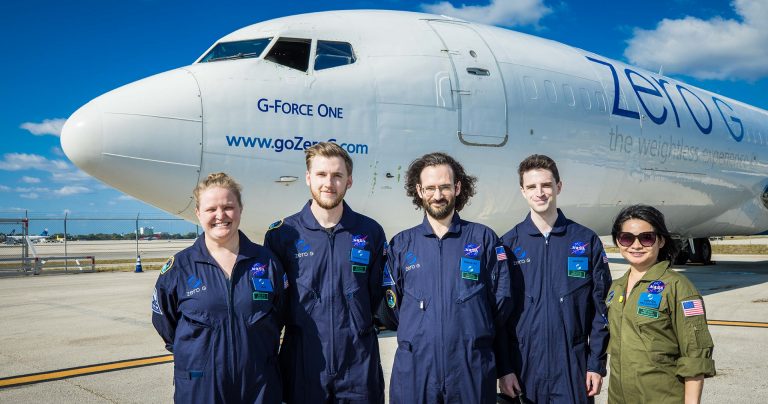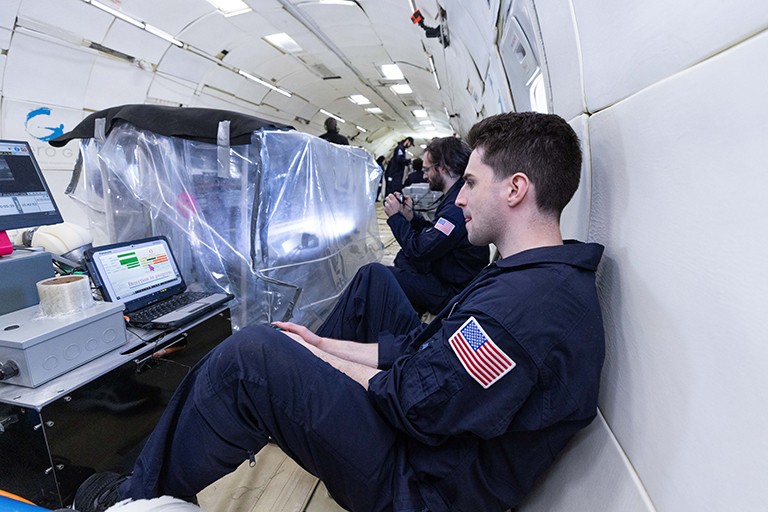Concordia master’s student and research assistant join NASA on a parabolic flight experiment

It’s a rare opportunity for a graduate student to participate in the National Aeronautics and Space Administration’s (NASA) zero-gravity flights.
Yet it became a reality for George Butt, an electrical and computer engineering master’s student in Krzysztof (Chris) Skonieczny’s Aerospace Robotics Laboratory. Skonieczny is a Concordia associate professor and Canada Research Chair in Aerospace Robotics, Electrical and Computer Engineering (Tier 2).
Alongside research assistant Pierre-Lucas Aubin-Fournier, BEng 20, MASc 22, George Butt recently joined NASA’s Ultrasonic Blade Flight (UBF) Experiment to advance techniques for handling lunar and Martian soil materials.
 George Butt (front) and Pierre-Lucas Aubin Fournier (back) aboard the Zero-G flight in Florida.
George Butt (front) and Pierre-Lucas Aubin Fournier (back) aboard the Zero-G flight in Florida.
The parabolic flight, conducted on April 24 and 25, involved the use of an ultrasonically vibrating blade in regolith simulant, simulating lunar, Martian and microgravity environments. This experiment, part of NASA’s Flight Opportunities program, was conducted with the Zero-G Corporation in Florida.
A zero-gravity flight, or parabolic flight, involves flying a plane in a series of steep climbs and dives to create brief periods of weightlessness or of reduced gravity like that of the moon or Mars.
Skonieczny’s team at Concordia provided the test rig used in the experiment. This rig autonomously prepares the soil-like material, moves the experimental blade using a precision-controlled robotic arm — called a Cartesian gantry — and captures detailed video data of the soil’s motion during the experiment.
Based on the results, the data collected by the researchers will be used for upcoming peer-reviewed publications co-authored with NASA — Erin Rezich, aerospace engineer and space resources technologist at NASA Glenn Research Center, is lead author.
“It’s a privilege to work alongside NASA engineers and researchers and to be a part of such a pivotal project in space exploration,” says George Butt.
“This experience has been incredibly fulfilling and rewarding. I’m excited to see how this technology could help us permanently return to the Moon and eventually reach Mars.”
Skonieczny has a history of conducting innovative experiments in reduced-gravity environments. His past experiments have flown in reduced-gravity flights with the National Research Council of Canada’s Flight Research Laboratory, with funding from the Canadian Space Agency. They explored how to predict how well rovers will perform on the Moon or Mars.
Find out more about Concordia’s Department of Electrical and Computer Engineering.


